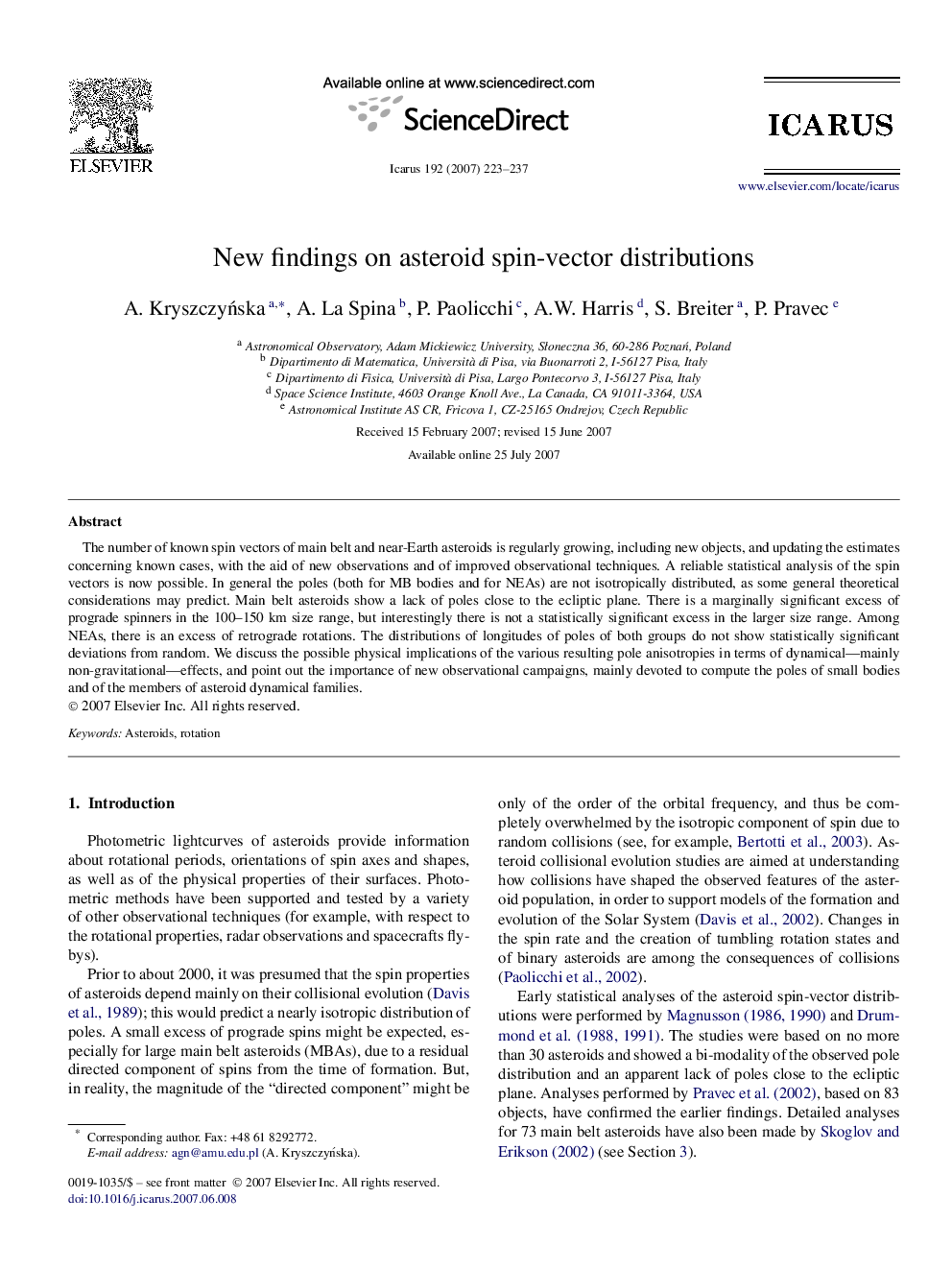| Article ID | Journal | Published Year | Pages | File Type |
|---|---|---|---|---|
| 1775453 | Icarus | 2007 | 15 Pages |
The number of known spin vectors of main belt and near-Earth asteroids is regularly growing, including new objects, and updating the estimates concerning known cases, with the aid of new observations and of improved observational techniques. A reliable statistical analysis of the spin vectors is now possible. In general the poles (both for MB bodies and for NEAs) are not isotropically distributed, as some general theoretical considerations may predict. Main belt asteroids show a lack of poles close to the ecliptic plane. There is a marginally significant excess of prograde spinners in the 100–150 km size range, but interestingly there is not a statistically significant excess in the larger size range. Among NEAs, there is an excess of retrograde rotations. The distributions of longitudes of poles of both groups do not show statistically significant deviations from random. We discuss the possible physical implications of the various resulting pole anisotropies in terms of dynamical—mainly non-gravitational—effects, and point out the importance of new observational campaigns, mainly devoted to compute the poles of small bodies and of the members of asteroid dynamical families.
